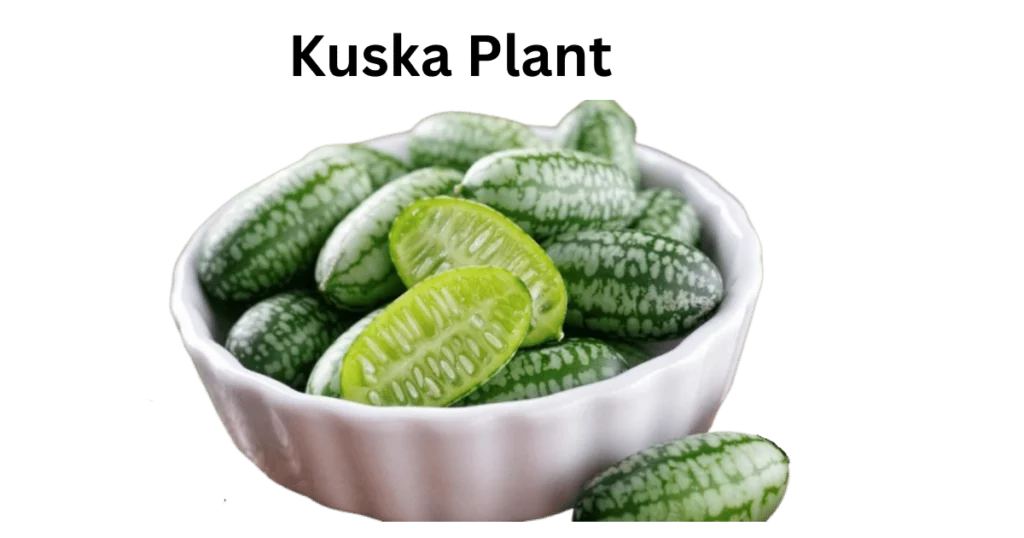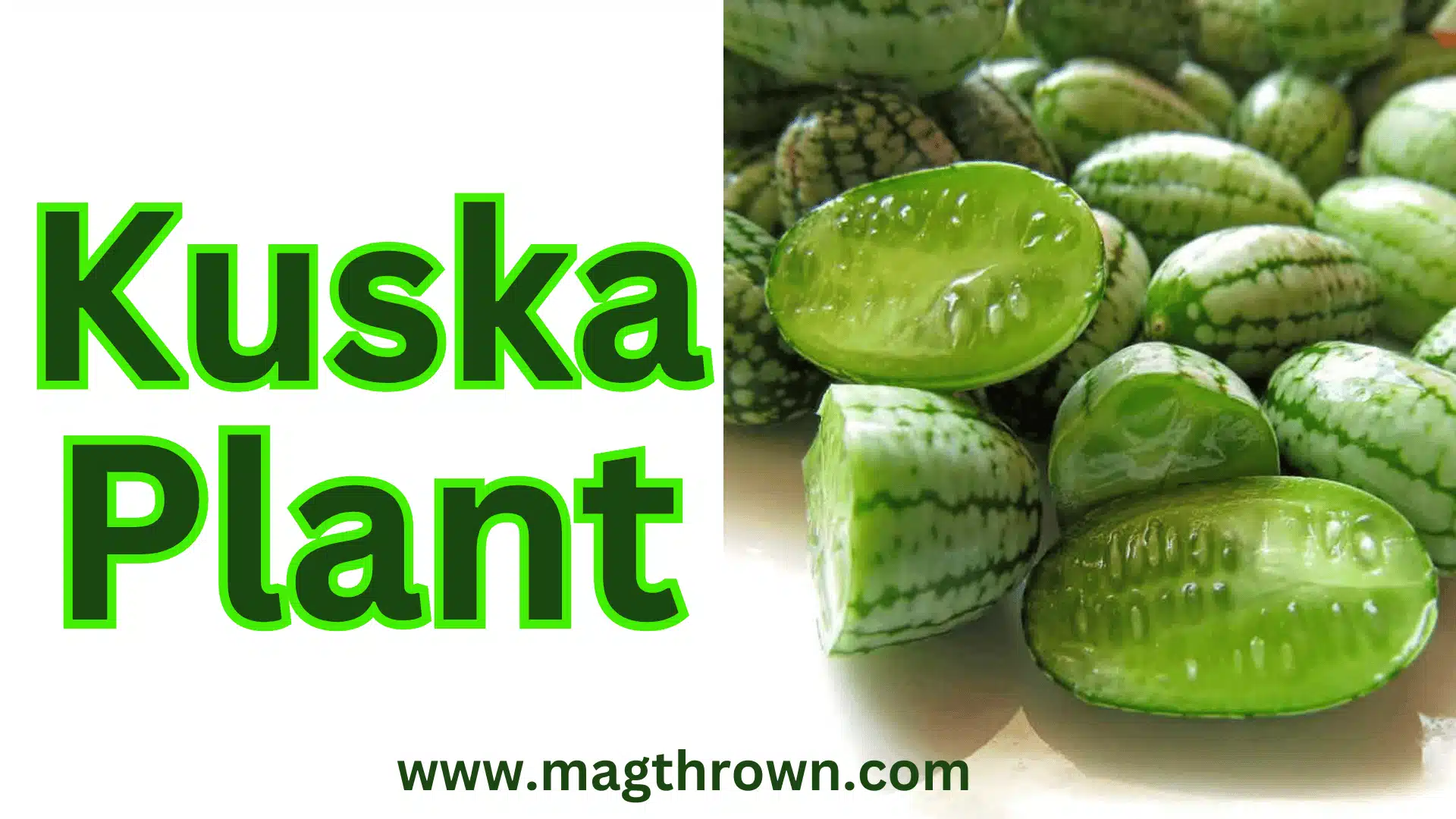Each with its own unique properties. Among the lesser-known gems of nature is the kuska plant.Nature has always been a source of wonder, providing us with an abundance of flora and fauna marked by botanicals.
Wonder that has been captivating the hearts and minds of botanists, herbalists, and naturalists for centuries. In this comprehensive exploration, we delve deep into the world of Kuska, uncovering its history, characteristics, and the multitude of ways it contributes to our well-being and the environment.
Unveiling the Kuska Plant
A Botanical Enigma Of Kuska Plant
Kuska is a genus of parasitic flowering plants that belongs to the Convolvulus family. These intriguing plants are often referred to as “dodder” due to their unique parasitic lifestyle. Unlike typical plants that photosynthesize and produce their own nutrients through the process of photosynthesis, Kuska plants are parasitic and rely entirely on other host plants for sustenance.
Diversity in Species
The Kuska genus comprises over 200 species, each with its own distinct features and characteristics. These species can be found in various regions around the world, from temperate to tropical climates. While they share common parasitic traits, the specifics of their interactions with host plants and the ecosystems they inhabit can vary significantly.
A Life of Dependency: Kuska’s Parasitic Lifestyle
The Art of Parasitism in the Kuska Plant
One of the most fascinating aspects of the Kuska plant is its parasitic nature. Unlike traditional plants that root themselves in the soil to access water and nutrients, Kuska plants have evolved a different strategy. They send out tiny thread-like structures called haustoria that penetrate the host plant’s vascular system. Once connected, the Kuska plant effectively siphons off water, minerals, and other essential nutrients from its host.
Choosing the Right Host for the Kuska Plant
Kuska plants are highly selective when it comes to choosing their host plants.They rely on a complex array of biochemical signals and physical cues to identify suitable hosts.Interestingly, Kuska plants can even distinguish between potential host plants and non-hosts based on chemical signals emitted by the plants.
A Delicate Balance Of Kuska Plants
While Kuska plants benefit from their host’s resources, they must also strike a balance to avoid overtaxing their hosts. An excessive drain on the host plant can lead to its weakening or death, which would be detrimental to the Kuska plant as well. This delicate ecological relationship highlights the intricacies of nature’s web.
Medicinal Marvels of Kuska Plant
Traditional Uses Of Kuska Plant
Throughout history, various cultures have recognized the potential therapeutic properties of Kuska plants. In traditional medicine systems, Kuska has been used to address a wide range of ailments, including digestive issues, respiratory problems, and skin conditions. Its diverse applications have made it a valuable resource for herbal practitioners.
Modern Research For Kuska Plant
Contemporary research has shed new light on the medicinal potential of Kuska plants. Studies have revealed the presence of bioactive compounds in these plants that exhibit anti-inflammatory, antioxidant, and antimicrobial properties. These findings have sparked further interest in exploring Kuska as a source of natural remedies and pharmaceutical compounds.
Potential Applications
The bioactive compounds found in these plants have shown promise in various medical applications, including the development of novel drugs and treatments. Researchers are particularly excited about their potential for addressing chronic inflammatory conditions. Such as arthritis and natural antimicrobial agents in the age of antibiotic resistance.
Kuska Plant Benefits You Need To Know
Weight Loss
It is primarily known for its weight-loss benefits because the fruit is packed with low-calorie and high-fiber contents. It mainly contains compounds that help control blood sugar levels and are beneficial for weight loss.
Rich In Nutrients
You can’t believe it.”Kuska fruit packs have many essential nutrients and compounds that have various health benefits.
Anti-Inflammatory and Antioxidant Properties
You know that the compound cucurbitacin, found in “Kuska fruits and cucumbers, has miraculous anti-cancer properties?
It has antioxidants, which help reduce stress and supply oxygen more easily to your body’s blood vessels. It also helps to prevent swelling, bloating, and pain.
Antimicrobial Compounds
Kuska fruit helps deter the spread of harmful bacteria and fungal infections.Kuska fruit fights against various pathogenic bacteria, Such as E. Coli, Salmonella, and Staphylococcus aureus.
It also fights Candida albicans and Aspergillus Niger, which infest food materials.
It also helps prevent the growth of foodborne pathogens and spoilage bacteria.
Kuska is similar to lemon and works as a natural cleaning agent.
Boosts Metabolism With Kuska Plant
This plant has natural contents that help improve metabolism and digestive enzymes in the gut. The vitamin C content primarily found in the kuska plant helps to grow white blood cells, which fight against many infections.
Hydrating and Refreshing With Kuska Plant
The Kuska plant is vital for healthy skin, increasing oxygen levels, and regulating body temperature. The potassium and magnesium found in this plant help to maintain average fluid balance and pH levels.
Kuska in Environmental Conservation
Ecosystem Benefits
While Kuska plants are often seen as parasitic, they also play a role in ecosystem dynamics. In some cases, they can act as pioneers in disturbed habitats, helping to stabilize soil and prevent erosion. Additionally, their presence can influence the diversity of plant species in an area, which can have cascading effects on the entire ecosystem.
Challenges and Concerns
Despite their ecological contributions, Kuska plants can also pose challenges to agricultural and horticultural practices. They have the potential to harm crops and ornamental plants, leading to concerns among farmers and gardeners. Striking a balance between harnessing their ecological benefits and managing their impact on cultivated areas remains a subject of ongoing research and debate.
Cultivating Kuska Plants: A Sustainable Approach
Horticultural Practices
For those interested in cultivating Kuska plants, it’s essential to do so in a responsible and sustainable manner. Given their parasitic nature, Kuska plants must be carefully managed to prevent them from infesting valuable crops and plants. Horticultural techniques, such as controlled growth and selective breeding, can help mitigate their impact.
Ethical Considerations
Furthermore, ethical considerations come into play when cultivating Kuska plants. Conservationists and plant enthusiasts must balance the desire to study and appreciate these unique plants with the need to protect native ecosystems from potential invasiveness.
The Future of Kuska Plant Research
As we continue to unlock the mysteries of this plant, it becomes increasingly evident that this botanical wonder has much more to offer than initially meets the eye. Its unique parasitic lifestyle, medicinal potential, and ecological role make it a captivating subject of study for researchers worldwide. As we delve deeper into the world of the Kuska plant, it is essential to approach its exploration with a balanced perspective that considers its benefits and challenges.
“Kuska Plants” with some variety and specification examples:
| Variety | Specification |
|---|---|
| Kuska Rose | Height: 1.5–2 feet |
| Flower Color: Red, Pink, or White | |
| Sunlight: Full sun to partial shade | |
| Watering: Regular, well-draining soil | |
| Blooming Season: Spring to Fall | |
| Special Care: Pruning to maintain Shape | |
| Uses: Ornamental plants in gardens | |
| Dwarf Kuska | Height: 6–12 inches |
| Flower Color: Purple, Blue, or Yellow | |
| Sunlight: Full sun to light shade | |
| Watering: Moderate, well-draining soil | |
| Blooming Season: Spring to early summer | |
| Special Care: Deadheading spent flowers | |
| Uses: Borders, edging, or container planting | |
| Giant Kuska | Height: 3-4 feet |
| Flower Color: Yellow, Orange, or Red | |
| Sunlight: Full sun | |
| Watering: Deep and infrequent watering | |
| Blooming Season: Late spring to early summer | |
| Special Care: Support for tall Stems | |
| Uses: Backyard focal point, cut flowers | |
| Kuska Fern | Height: 1-2 feet |
| Leaf Type: Fern-like fronds | |
| Sunlight: Indirect sunlight or partial shade | |
| Watering: Keep soil consistently moist | |
| Foliage Season: Evergreen | |
| Special Care: Maintain high humidity | |
| Uses: Indoor houseplants, shaded garden areas | |
| Miniature Kuska | Height: 4-6 inches |
| Flower Color: Various, including purple and white | |
| Sunlight: Full sun to partial shade | |
| Watering: Regular, well-draining soil | |
| Blooming Season: Late spring to early summer | |
| Special Care: Suitable for rock Gardens | |
| Uses: Rock gardens, miniature landscapes |
FAQs
What is the Kuska Plant, and Where is it found?
The Kuska Plant, scientifically known as… (provide scientific name), is a tropical plant native to… (mention regions or countries). It thrives in (describe its preferred habitat).
What are the Key Characteristics of the Kuska Plant?
The Kuska Plant is recognized for its…(mention its distinctive features such as appearance, size, leaf structure, or any unique traits).
How is the Kuska plant cultivated and grown?
Cultivating the Kuska Plant involves…(explain cultivation methods, soil preferences, watering needs, or any specific care requirements).
What are the common uses or benefits of the Kuska plant?
This versatile plant is utilized for…(enumerate its applications, whether in traditional medicine, culinary uses, or other practical purposes).
Is the Kuska plant easy to maintain in home gardens?
Maintaining the Kuska Plant at home entails…(guide its care within a home setting, including sunlight needs, watering frequency, or any potential challenges).

Conclusion
In conclusion, the Kuska plant stands as a testament to the marvels of nature’s diversity. Its parasitic lifestyle, medicinal properties, and ecological significance make it a fascinating subject for research and conservation efforts. Though we’ve uncovered much about the Kuska plant, a wealth of knowledge lies beneath its thread-like vines, waiting to be discovered. As we continue to explore and understand the intricacies of this remarkable botanical wonder, we can better appreciate the intricate web of life that surrounds us.


order viagra from uk